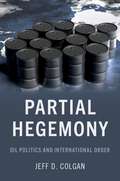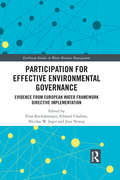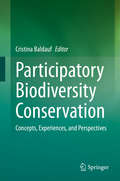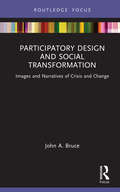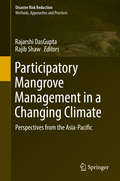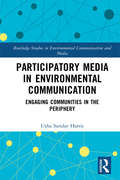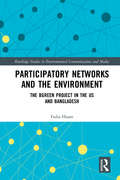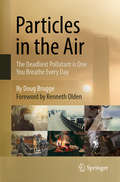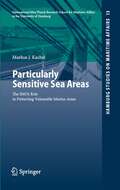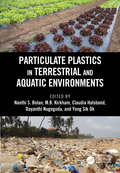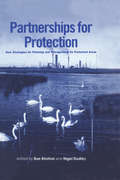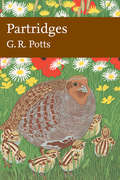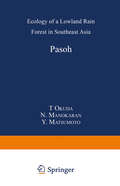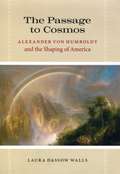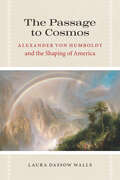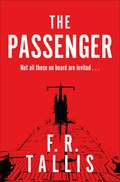- Table View
- List View
Partial Hegemony: Oil Politics and International Order
by Jeff D. ColganThe global history of oil politics, from World War I to the present, can teach us much about world politics, climate change, and international order in the twenty-first century. When and why does international order change? The largest peaceful transfer of wealth across borders in all of human history began with the oil crisis of 1973. OPEC countries turned the tables on the most powerful businesses on the planet, quadrupling the price of oil and shifting the global distribution of profits. It represented a huge shift in international order. Yet, the textbook explanation for how world politics works-that the most powerful country sets up and sustains the rules of international order after winning a major war-doesn't fit these events, or plenty of others. Instead of thinking of "the" international order as a single thing, Jeff Colgan explains how it operates in parts, and often changes in peacetime. Partial Hegemony offers lessons for leaders and analysts seeking to design new international governing arrangements to manage an array of pressing concerns ranging from US-China rivalry to climate change, and from nuclear proliferation to peacekeeping. A major contribution to international relations theory, this book promises to reshape our understanding of the forces driving change in world politics.
Partial Hegemony: Oil Politics and International Order
by Jeff D. ColganThe global history of oil politics, from World War I to the present, can teach us much about world politics, climate change, and international order in the twenty-first century. When and why does international order change? The largest peaceful transfer of wealth across borders in all of human history began with the oil crisis of 1973. OPEC countries turned the tables on the most powerful businesses on the planet, quadrupling the price of oil and shifting the global distribution of profits. It represented a huge shift in international order. Yet, the textbook explanation for how world politics works-that the most powerful country sets up and sustains the rules of international order after winning a major war-doesn't fit these events, or plenty of others. Instead of thinking of "the" international order as a single thing, Jeff Colgan explains how it operates in parts, and often changes in peacetime. Partial Hegemony offers lessons for leaders and analysts seeking to design new international governing arrangements to manage an array of pressing concerns ranging from US-China rivalry to climate change, and from nuclear proliferation to peacekeeping. A major contribution to international relations theory, this book promises to reshape our understanding of the forces driving change in world politics.
Participation for Effective Environmental Governance: Evidence from European Water Framework Directive Implementation (Earthscan Studies in Water Resource Management)
by Elisa Kochskämper Edward Challies Nicolas W. Jager Jens NewigDoes participatory governance benefit the environment? The European Water Framework Directive (WFD), which came into force in 2000 with the aim of revolutionizing European water governance, mandates participatory river basin management planning across the European Union. The belief of European policymakers and the European Commission is that participation will deliver better policy outputs and implementation. This book examines a range of approaches to participatory river basin management planning, and considers whether and how participation impacted on the environmental standard of planning documents, quality of implementation, and social outcomes. It draws on evidence from WFD implementation in eight case studies from Germany, Spain and the United Kingdom on the basis of a matched comparative case study design. The Directive sets common timeframes and procedural requirements, which provides a perfect test-bed and unique opportunity to study the effects of participation on implementation and outcomes in comparative perspective.
Participation for Effective Environmental Governance: Evidence from European Water Framework Directive Implementation (Earthscan Studies in Water Resource Management)
by Elisa Kochskämper Edward Challies Nicolas W. Jager Jens NewigDoes participatory governance benefit the environment? The European Water Framework Directive (WFD), which came into force in 2000 with the aim of revolutionizing European water governance, mandates participatory river basin management planning across the European Union. The belief of European policymakers and the European Commission is that participation will deliver better policy outputs and implementation. This book examines a range of approaches to participatory river basin management planning, and considers whether and how participation impacted on the environmental standard of planning documents, quality of implementation, and social outcomes. It draws on evidence from WFD implementation in eight case studies from Germany, Spain and the United Kingdom on the basis of a matched comparative case study design. The Directive sets common timeframes and procedural requirements, which provides a perfect test-bed and unique opportunity to study the effects of participation on implementation and outcomes in comparative perspective.
Participatory Biodiversity Conservation: Concepts, Experiences, and Perspectives
by Cristina BaldaufIt has long been claimed that addressing biodiversity loss and other environmental problems demands a better understanding of the social dimensions of conservation; nevertheless, the active participation of indigenous peoples and local communities (IPLCs) in conservation initiatives is still a challenging and somehow controversial issue. In this context, this book hopes to give voice to other perspectives related to biodiversity conservation beyond the “fortress conservation” model and emphasize one of the pillars of democracy – popular participation. It covers a wide range of environments and issues of special significance to the topic, such as the expansion of culturally constructed niches, protected areas and food security, community-based management, participatory agroforestry, productive restoration and biocultural conservation. The contents also explore the limitations and shortcomings of participatory practices in protected areas, the relationship between the global crisis of democracy and the decline of biocultural diversity, as well as present current discussions on policy frameworks and governance systems for effective participatory biodiversity conservation. In sum, this book provides a comprehensive and realistic perspective on the social dimensions of conservation based on a series of interrelated themes in participatory biodiversity conservation. The connections between biocultural conservation and the current political and economic environment are highlighted through the chapters and the book closes with a debate on ways to reconcile human welfare, environmental justice and biodiversity conservation.
Participatory Design and Social Transformation: Images and Narratives of Crisis and Change (Routledge Focus on Environment and Sustainability)
by John A. BruceParticipatory Design and Social Transformation introduces theories and methodologies for using image-oriented narratives as modes of inquiry and proposition toward greater justice and equity for society and the environment. Participatory artistic- and design-based research encounters – being, making, and learning with people, things, and situations – are explored through practices that utilize image-oriented and cinematic narratives. Collaborative alliances are invited to consider aesthetics, visuality, attunement, reflection, reciprocity, and care as a means for transdisciplinary approaches that foster generative and ethically responsible conditions toward collective liberation. The design of spectacles is proposed as a way for collective movements to affectively contribute to positive systemic changes from the ground up. In this way, Participatory Design and Social Transformation bridges contemporary advances in design theory and practice with media and art theory, the human and social sciences, and a pedagogy of interdependence. Participatory Design and Social Transformation will be of great interest to both professional and academic communities, providing resources for researchers, artists, designers, activists, students, educators, and leaders engaged with initiatives for transformation.
Participatory Design and Social Transformation: Images and Narratives of Crisis and Change (Routledge Focus on Environment and Sustainability)
by John A. BruceParticipatory Design and Social Transformation introduces theories and methodologies for using image-oriented narratives as modes of inquiry and proposition toward greater justice and equity for society and the environment. Participatory artistic- and design-based research encounters – being, making, and learning with people, things, and situations – are explored through practices that utilize image-oriented and cinematic narratives. Collaborative alliances are invited to consider aesthetics, visuality, attunement, reflection, reciprocity, and care as a means for transdisciplinary approaches that foster generative and ethically responsible conditions toward collective liberation. The design of spectacles is proposed as a way for collective movements to affectively contribute to positive systemic changes from the ground up. In this way, Participatory Design and Social Transformation bridges contemporary advances in design theory and practice with media and art theory, the human and social sciences, and a pedagogy of interdependence. Participatory Design and Social Transformation will be of great interest to both professional and academic communities, providing resources for researchers, artists, designers, activists, students, educators, and leaders engaged with initiatives for transformation.
Participatory Mangrove Management in a Changing Climate: Perspectives from the Asia-Pacific (Disaster Risk Reduction)
by Rajarshi DasGupta Rajib ShawThis book outlines the performance and management of mangroves in the changing climatic scenario of the Asia-Pacific region and draws examples and lessons from the national and community-driven mangrove conservation programs of relevant countries including Pakistan, India, Bangladesh, Sri Lanka, Myanmar, Thailand, Cambodia, Indonesia, the Philippines, and Japan as well as the Pacific islands. By highlighting the major drawbacks that hinder effective mangrove conservation, the book contributes towards enhancing climate resilience of communities through proposition of corrective methods and ameliorative approaches of mangrove conservation. Mangroves play an important role in adapting to climate change and provide a plethora of ecosystem services that are fundamental to human survival. Yet these ecosystems are exceptionally prone to extinction due to increased human interventions and changes in environmental boundary conditions. Especially in the Asia-Pacific region, mangroves have dwindled at an exceptional high rate over the past three decades. As the threat of climate change hovers over millions of people in this region, particularly those who crowd the low-lying coastal areas, conservation/restoration of mangroves through appropriate policies and practices remain highly imperative. The primary target readers for this book are students and researchers in the fields of conservation and management of mangroves, especially from the developing tropical countries of the Asia-Pacific region. Other target groups comprise policy planners, practitioners, and NGO workers, who will be able to apply the collective knowledge from this work towards proactive mangrove conservation through effective mediation in local communities.
Participatory Media in Environmental Communication: Engaging Communities in the Periphery (Routledge Studies in Environmental Communication and Media)
by Usha Sundar HarrisParticipatory Media in Environmental Communication brings together stories of communities in the Pacific islands – a region that is severely affected by the impacts of climate change. Despite living on the margins of the digital revolution, these island communities have used media and communication to create awareness of and find solutions to environmental challenges. By telling their stories in their own way, ordinary people are able to communicate compelling accounts of how different, but interrelated, environmental, political, and economic issues converge and impact at a local level. This book fills a significant gap in our understanding of how participatory media is used as a dialogic tool to raise awareness and facilitate discussion of environmental issues that are now critical. It includes a section on pedagogy and practice – the undergirding principles, the tools, the methods. The book offers a framework for Participatory Environmental Communication that weaves three widely used concepts, diversity, network and agency, into a cohesive underlying system to bring scholars, practitioners and diverse communities together in a dialogue about pressing environmental issues. This book is a valuable resource for researchers and students in communication and media studies, environmental communication, cultural studies, and environmental sciences, as well as practitioners, policy makers and environmental activists.
Participatory Media in Environmental Communication: Engaging Communities in the Periphery (Routledge Studies in Environmental Communication and Media)
by Usha Sundar HarrisParticipatory Media in Environmental Communication brings together stories of communities in the Pacific islands – a region that is severely affected by the impacts of climate change. Despite living on the margins of the digital revolution, these island communities have used media and communication to create awareness of and find solutions to environmental challenges. By telling their stories in their own way, ordinary people are able to communicate compelling accounts of how different, but interrelated, environmental, political, and economic issues converge and impact at a local level. This book fills a significant gap in our understanding of how participatory media is used as a dialogic tool to raise awareness and facilitate discussion of environmental issues that are now critical. It includes a section on pedagogy and practice – the undergirding principles, the tools, the methods. The book offers a framework for Participatory Environmental Communication that weaves three widely used concepts, diversity, network and agency, into a cohesive underlying system to bring scholars, practitioners and diverse communities together in a dialogue about pressing environmental issues. This book is a valuable resource for researchers and students in communication and media studies, environmental communication, cultural studies, and environmental sciences, as well as practitioners, policy makers and environmental activists.
Participatory Networks and the Environment: The BGreen Project in the US and Bangladesh (Routledge Studies in Environmental Communication and Media)
by Fadia HasanSeeking innovative answers to global sustainability challenges has become an urgent need with the onslaught of environmental and ecological degradation that surrounds us today. More than ever, there is a need to carve new ways for citizens and different industries and institutions to unite – to cooperate, communicate and collaborate to address growing global sustainability concerns. This book examines one such global collaboration called The BGreen Project (BGreen): a transnational participatory action research project that spans the United States and Bangladesh with the aim of addressing environmental issues via academic–community engagement. By analysing and unpacking the architecture of BGreen, Hasan teases out the key factors that are required for the continued momentum of environmentally focused, academic–community partnership projects in order to present a workable model that could be applied elsewhere. This model is based around a unique conceptual framework developed by the author – “transnational participatory networks” – which is drawn from participatory action research and actor network theory, with the specific aim of addressing the common challenge of building evolving, stable and sustainable networks. This book will be of great interest to students and scholars of environmental communication, citizen participation, environmental politics, environmental sociology and sustainable development.
Participatory Networks and the Environment: The BGreen Project in the US and Bangladesh (Routledge Studies in Environmental Communication and Media)
by Fadia HasanSeeking innovative answers to global sustainability challenges has become an urgent need with the onslaught of environmental and ecological degradation that surrounds us today. More than ever, there is a need to carve new ways for citizens and different industries and institutions to unite – to cooperate, communicate and collaborate to address growing global sustainability concerns. This book examines one such global collaboration called The BGreen Project (BGreen): a transnational participatory action research project that spans the United States and Bangladesh with the aim of addressing environmental issues via academic–community engagement. By analysing and unpacking the architecture of BGreen, Hasan teases out the key factors that are required for the continued momentum of environmentally focused, academic–community partnership projects in order to present a workable model that could be applied elsewhere. This model is based around a unique conceptual framework developed by the author – “transnational participatory networks” – which is drawn from participatory action research and actor network theory, with the specific aim of addressing the common challenge of building evolving, stable and sustainable networks. This book will be of great interest to students and scholars of environmental communication, citizen participation, environmental politics, environmental sociology and sustainable development.
Particles in the Air: The Deadliest Pollutant is One You Breathe Every Day
by Doug BruggeThe book covers the three largest sources of particulate matter pollution in five chapters. These sources constitute three of the top ten public health problems in the world today and far outstrip any other environmental health threats in terms of health impact. The book begins with indoor solid fuel combustion for cooking in lower income countries and tells the story of how this problem was identified and recent efforts to eliminate it. The book next looks at tobacco smoking and second hand smoke, again reviewing the history of how these problems were identified scientifically and the fierce industry push back against the science. The last two chapters cover ambient particulate matter in the outdoor air. They address fine and ultrafine particles, describing the pioneering work on fine PM, the subsequent industry attacks on the scientists and then the emerging interest and concern about ultrafine particles, an area of research in which the author has participated. This book is geared towards non-scientists, including high school and college students.
Particularly Sensitive Sea Areas: The IMO's Role in Protecting Vulnerable Marine Areas (Hamburg Studies on Maritime Affairs #13)
by Markus J. KachelDesignations of large Particularly Sensitive Sea Areas (PSSAs) triggered a controversial debate within the International Maritime Organisation (IMO) concerning the legal basis of PSSAs, the relationship between the IMO’s PSSA guidelines and UNCLOS, as well as the competency of IMO to adopt mandatory protective measures in these areas. As a result, IMO conducted a review process which led to substantially updated guidelines adopted in late 2005. This book provides a detailed analysis of the PSSA guidelines and protective measures available in PSSAs. Emphasis is placed on their legal basis and the implications for coastal states' jurisdiction over vessel-source pollution.
Particulate Plastics in Terrestrial and Aquatic Environments
by M. B. Kirkham Claudia Halsband Nanthi S. Bolan Dayanthi Nugegoda Yong-Sik OkThe manufacture of plastic as well as its indiscriminate disposal and destruction by incineration pollutes atmospheric, terrestrial, and aquatic ecosystems. Synthetic plastics do not break down; they accumulate in the environment as macro-, micro-, and nanoplastics. These particulate plastics are a major source of pollutants in soil and marine ecosystems. Particulate Plastics in Terrestrial and Aquatic Environments provides a fundamental understanding of the sources of these plastics and the threats they pose to the environment. The book demonstrates the ecotoxicity of particulate plastics using case studies and offers management practices to mitigate particulate plastic contamination in the environment. Features · Describes physical and chemical properties of particulate plastics in terrestrial and aquatic ecosystems · Presents information on characteristics of particulate plastics as impacted by weathering processes · Provides numerous approaches for managing particulate plastic contamination · Identifies sources of particulate plastics in the environment; distribution and characteristics of particulate plastics; and management strategies of particulate plastics Written by a global team of scientists, this book is for researchers in the fields of environmental safety and waste management or individuals interested in the impact of particulate plastics on environmental health.
Particulate Plastics in Terrestrial and Aquatic Environments
by Nanthi S. Bolan, M.B. Kirkham, Claudia Halsband, Dayanthi Nugegoda, Yong Sik OkThe manufacture of plastic as well as its indiscriminate disposal and destruction by incineration pollutes atmospheric, terrestrial, and aquatic ecosystems. Synthetic plastics do not break down; they accumulate in the environment as macro-, micro-, and nanoplastics. These particulate plastics are a major source of pollutants in soil and marine ecosystems. Particulate Plastics in Terrestrial and Aquatic Environments provides a fundamental understanding of the sources of these plastics and the threats they pose to the environment. The book demonstrates the ecotoxicity of particulate plastics using case studies and offers management practices to mitigate particulate plastic contamination in the environment. Features · Describes physical and chemical properties of particulate plastics in terrestrial and aquatic ecosystems · Presents information on characteristics of particulate plastics as impacted by weathering processes · Provides numerous approaches for managing particulate plastic contamination · Identifies sources of particulate plastics in the environment; distribution and characteristics of particulate plastics; and management strategies of particulate plastics Written by a global team of scientists, this book is for researchers in the fields of environmental safety and waste management or individuals interested in the impact of particulate plastics on environmental health.
Partnerships for Protection: New Strategies for Planning and Management for Protected Areas
by Sue Stolton Nigel DudleyTaking into consideration the fact that many ecosystems are under-represented in protected areas of land and water and traditional management methods have often been ineffective, this volume describes how improvements can be made. Specifically, it explores ways of ensuring that all major ecosystems are safeguarded, and innovative approaches to conservation involving individuals, communities, companies and governments. The essence of the approach taken in the text is to build partnerships with those who have a stake in the care of land and water resources.
Partnerships for Protection: New Strategies for Planning and Management for Protected Areas
by Sue Stolton Nigel Dudley Biksham Gujja Bill Jackson Jean-Paul Jeanrenaud Gonzalo Oviedo Pedro Rosabal Adrian Phillips Sue WellsTaking into consideration the fact that many ecosystems are under-represented in protected areas of land and water and traditional management methods have often been ineffective, this volume describes how improvements can be made. Specifically, it explores ways of ensuring that all major ecosystems are safeguarded, and innovative approaches to conservation involving individuals, communities, companies and governments. The essence of the approach taken in the text is to build partnerships with those who have a stake in the care of land and water resources.
Partridges: Countryside Barometer (Collins New Naturalist Library #121)
by G R PottsGlobally, there are at least 45 species of game bird that have the word partridge in their name, but in this book G. R. Potts devotes himself to the Grey, Red-legged and Chukar Partridges, with particular emphasis on the Grey Partridge due to its well-known decline in Britain.
Pasoh: Ecology of a Lowland Rain Forest in Southeast Asia
by T. Okuda N. Manokaran Y. Matsumoto K. Niiyama S. C. Thomas P. S. AshtonThe Pasoh Forest Reserve (pasoh FR) has been a leading center for international field research in the Asian tropical forest since the 1970s, when a joint research project was carried out by Japanese, British and Malaysian research teams with the cooperation of the University of Malaya (UM) and the Forest Research Institute (FRI, now the Forest Research Institute Malaysia, FRIM) under the International Biological Program (IBP). The main objective of the project was to provide basic information on the primary productivity ofthe tropical rain forest, which was thought to be the most productive of the world's ecosystems. After the IBP project, a collaborative program between the University of Malaya and the University of Aberdeen, Scotland, UK, for post-graduate training was carried out at Pasoh. Reproductive biology of so me dipterocarp trees featured in many of the findings arrived at through the program, contributing greatly to progress in the population genetics of rain forest trees. Since those research pro grams, apart of the Pasoh forest and its field research station have been managed by FRIM. In 1984, FRIM started a long-term ecological research program in Pasoh FR with the Smithsonian Tropical Research Institute (STRI) and Harvard University, establishing a 50-ha plot and enumerating and mapping all trees 1 cm or more in diameter at breast height. A recensus has been conducted every 5 years.
The Passage to Cosmos: Alexander von Humboldt and the Shaping of America
by Laura Dassow WallsExplorer, scientist, writer, and humanist, Alexander von Humboldt was the most famous intellectual of the age that began with Napoleon and ended with Darwin. With Cosmos, the book that crowned his career, Humboldt offered to the world his vision of humans and nature as integrated halves of a single whole. In it, Humboldt espoused the idea that, while the universe of nature exists apart from human purpose, its beauty and order, the very idea of the whole it composes, are human achievements: cosmos comes into being in the dance of world and mind, subject and object, science and poetry. Humboldt’s science laid the foundations for ecology and inspired the theories of his most important scientific disciple, Charles Darwin. In the United States, his ideas shaped the work of Emerson, Thoreau, Poe, and Whitman. They helped spark the American environmental movement through followers like John Muir and George Perkins Marsh. And they even bolstered efforts to free the slaves and honor the rights of Indians. Laura Dassow Walls here traces Humboldt’s ideas for Cosmos to his 1799 journey to the Americas, where he first experienced the diversity of nature and of the world’s peoples—and envisioned a new cosmopolitanism that would link ideas, disciplines, and nations into a global web of knowledge and cultures. In reclaiming Humboldt’s transcultural and transdisciplinary project, Walls situates America in a lively and contested field of ideas, actions, and interests, and reaches beyond to a new worldview that integrates the natural and social sciences, the arts, and the humanities. To the end of his life, Humboldt called himself “half an American,” but ironically his legacy has largely faded in the United States. The Passage to Cosmos will reintroduce this seminal thinker to a new audience and return America to its rightful place in the story of his life, work, and enduring legacy.
The Passage to Cosmos: Alexander von Humboldt and the Shaping of America
by Laura Dassow WallsExplorer, scientist, writer, and humanist, Alexander von Humboldt was the most famous intellectual of the age that began with Napoleon and ended with Darwin. With Cosmos, the book that crowned his career, Humboldt offered to the world his vision of humans and nature as integrated halves of a single whole. In it, Humboldt espoused the idea that, while the universe of nature exists apart from human purpose, its beauty and order, the very idea of the whole it composes, are human achievements: cosmos comes into being in the dance of world and mind, subject and object, science and poetry. Humboldt’s science laid the foundations for ecology and inspired the theories of his most important scientific disciple, Charles Darwin. In the United States, his ideas shaped the work of Emerson, Thoreau, Poe, and Whitman. They helped spark the American environmental movement through followers like John Muir and George Perkins Marsh. And they even bolstered efforts to free the slaves and honor the rights of Indians. Laura Dassow Walls here traces Humboldt’s ideas for Cosmos to his 1799 journey to the Americas, where he first experienced the diversity of nature and of the world’s peoples—and envisioned a new cosmopolitanism that would link ideas, disciplines, and nations into a global web of knowledge and cultures. In reclaiming Humboldt’s transcultural and transdisciplinary project, Walls situates America in a lively and contested field of ideas, actions, and interests, and reaches beyond to a new worldview that integrates the natural and social sciences, the arts, and the humanities. To the end of his life, Humboldt called himself “half an American,” but ironically his legacy has largely faded in the United States. The Passage to Cosmos will reintroduce this seminal thinker to a new audience and return America to its rightful place in the story of his life, work, and enduring legacy.
The Passage to Cosmos: Alexander von Humboldt and the Shaping of America
by Laura Dassow WallsExplorer, scientist, writer, and humanist, Alexander von Humboldt was the most famous intellectual of the age that began with Napoleon and ended with Darwin. With Cosmos, the book that crowned his career, Humboldt offered to the world his vision of humans and nature as integrated halves of a single whole. In it, Humboldt espoused the idea that, while the universe of nature exists apart from human purpose, its beauty and order, the very idea of the whole it composes, are human achievements: cosmos comes into being in the dance of world and mind, subject and object, science and poetry. Humboldt’s science laid the foundations for ecology and inspired the theories of his most important scientific disciple, Charles Darwin. In the United States, his ideas shaped the work of Emerson, Thoreau, Poe, and Whitman. They helped spark the American environmental movement through followers like John Muir and George Perkins Marsh. And they even bolstered efforts to free the slaves and honor the rights of Indians. Laura Dassow Walls here traces Humboldt’s ideas for Cosmos to his 1799 journey to the Americas, where he first experienced the diversity of nature and of the world’s peoples—and envisioned a new cosmopolitanism that would link ideas, disciplines, and nations into a global web of knowledge and cultures. In reclaiming Humboldt’s transcultural and transdisciplinary project, Walls situates America in a lively and contested field of ideas, actions, and interests, and reaches beyond to a new worldview that integrates the natural and social sciences, the arts, and the humanities. To the end of his life, Humboldt called himself “half an American,” but ironically his legacy has largely faded in the United States. The Passage to Cosmos will reintroduce this seminal thinker to a new audience and return America to its rightful place in the story of his life, work, and enduring legacy.
The Passage to Cosmos: Alexander von Humboldt and the Shaping of America
by Laura Dassow WallsExplorer, scientist, writer, and humanist, Alexander von Humboldt was the most famous intellectual of the age that began with Napoleon and ended with Darwin. With Cosmos, the book that crowned his career, Humboldt offered to the world his vision of humans and nature as integrated halves of a single whole. In it, Humboldt espoused the idea that, while the universe of nature exists apart from human purpose, its beauty and order, the very idea of the whole it composes, are human achievements: cosmos comes into being in the dance of world and mind, subject and object, science and poetry. Humboldt’s science laid the foundations for ecology and inspired the theories of his most important scientific disciple, Charles Darwin. In the United States, his ideas shaped the work of Emerson, Thoreau, Poe, and Whitman. They helped spark the American environmental movement through followers like John Muir and George Perkins Marsh. And they even bolstered efforts to free the slaves and honor the rights of Indians. Laura Dassow Walls here traces Humboldt’s ideas for Cosmos to his 1799 journey to the Americas, where he first experienced the diversity of nature and of the world’s peoples—and envisioned a new cosmopolitanism that would link ideas, disciplines, and nations into a global web of knowledge and cultures. In reclaiming Humboldt’s transcultural and transdisciplinary project, Walls situates America in a lively and contested field of ideas, actions, and interests, and reaches beyond to a new worldview that integrates the natural and social sciences, the arts, and the humanities. To the end of his life, Humboldt called himself “half an American,” but ironically his legacy has largely faded in the United States. The Passage to Cosmos will reintroduce this seminal thinker to a new audience and return America to its rightful place in the story of his life, work, and enduring legacy.
The Passenger: A Novel
by F. R. TallisNot all those on board are invited . . .1941. A German submarine, U-330, patrols the stormy inhospitable waters of the North Atlantic. It is commanded by Siegfried Lorenz, a maverick naval officer who does not believe in the war he is bound by duty and honour to fight in. U-330 receives a triple-encoded message with instructions to collect two prisoners from a vessel located off the Icelandic coast and transport them to the base at Brest, and British submarine commander, Sutherland, and an Norwegian academic, Professor Bjørnar Grimstad, are taken on board. Contact between the prisoners and Lorenz has been forbidden, and it transpires that this special mission has been ordered by an unknown source, high up in the SS. It is rumoured that Grimstad is working on a secret weapon that could change the course of the war . . . Then, Sutherland goes rogue, and a series of shocking, brutal events occurs. In the aftermath, disturbing things start happening on the boat. It seems that a lethal, supernatural force is stalking the crew, wrestling with Lorenz for control. A thousand feet under the dark, icy waves, it doesn't matter how loud you scream . . .
